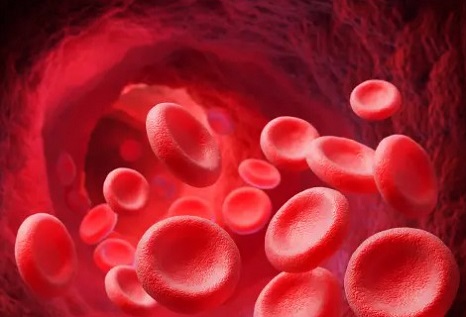Nikhil Prasad Fact checked by:Thailand Medical News Team Nov 05, 2024 1 year, 2 months, 11 hours, 19 minutes ago
Medical News: Understanding How Blood Cells Respond to pH Changes
A new study from researchers at the Federal Research and Clinical Center of Intensive Care Medicine and Rehabilitology in Moscow, alongside collaborators from the National University of Science and Technology “MISIS” -Russia and the Sarov Physics and Technology Institute, MEPhl-Russia, explores how shifts in blood acidity can impact red blood cells (RBCs). The study shows that when the body’s acid-base balance strays from the normal pH range of 7.35-7.45, significant changes occur in the shape, structure, and function of red blood cells. This
Medical News report delves into the key findings and implications of this research.
 Red Blood Cells Altered by Changes in pH Levels
Understanding Red Blood Cells and pH Levels
Red Blood Cells Altered by Changes in pH Levels
Understanding Red Blood Cells and pH Levels
Red blood cells play a crucial role in transporting oxygen throughout the body. Their shape and flexibility are vital for their function, allowing them to move smoothly through the narrowest of blood vessels. However, the study reveals that changes in blood pH can drastically alter these cells. When the pH deviates - whether due to acidosis (lower pH) or alkalosis (higher pH) - it impacts the RBCs' structure, including their membrane and cytoskeleton.
This study highlights that even small shifts in pH can transform the typically disc-shaped red blood cells into irregular forms such as echinocytes, which are spiky and less efficient at transporting oxygen. The study’s findings underline the importance of maintaining a balanced pH for optimal red blood cell function and overall health.
Key Findings: What Happens to Red Blood Cells When pH Changes
The study involved placing red blood cells in solutions with different pH levels - 6.4, 7.4, and 8.4 - and observing the effects over 30 minutes and seven hours. The pH 7.4 group served as the control, simulating normal physiological conditions.
Significant transformations were noted in the cells exposed to the acidic (pH 6.4) and alkaline (pH 8.4) environments:
-Shape Shifts: At pH 6.4 and 8.4, disc-shaped RBCs turned into echinocytes after just 30 minutes. The longer exposure led to a further reduction in discocytes and an increase in the number of echinocytes and other deformed cells like codocytes.
-Membrane Changes: The study used advanced imaging techniques like atomic force microscopy (AFM) to measure the membrane’s roughness and structural integrity. It showed that deviations from normal pH levels caused significant changes in the membrane's nanostructure.
-Cytoskeleton Alterations: The cells' internal structure, or cytoskeleton, was also affected. At pH 6.4, the cytoskeleton filaments thickened, leading to a larger pore size. Conversely, in an alkaline environment, the filaments thinned due to protein disassociation. These changes suggest that the cytoskeleton's stability depends heavily on maintaining a neutral pH.
&a
mp;nbsp;
The Role of Reactive Oxygen Species (ROS)
Another key aspect of the study was its investigation into reactive oxygen species (ROS), which are chemically reactive molecules that can cause damage to cells. High ROS levels are typically a sign of cellular stress. Using a technique called amperometric detection, the researchers found that both acidic and alkaline conditions led to increased ROS production in red blood cells:
-After 30 minutes, ROS levels were significantly higher in cells exposed to pH 6.4 and pH 8.4 compared to those at pH 7.4.
-This ROS increase doubled after seven hours of exposure, indicating prolonged stress on the cells.
-The study noted a strong correlation between higher ROS levels and increased cell stiffness, particularly under acidic conditions. This finding suggests that oxidative stress could play a role in the morphological changes observed in the cells.
What This Means for Blood Health
The changes in red blood cell structure and function observed in this study have potential implications for several medical conditions. For instance, in conditions like chronic kidney disease or severe respiratory illnesses, patients often experience shifts in their blood pH levels. The study suggests that such shifts could impair red blood cell function, affecting oxygen transport and potentially leading to complications.
Moreover, the study’s findings are particularly relevant for understanding how stored blood behaves over time. Stored blood can become more acidic, leading to changes in red blood cell structure and a decrease in their ability to transport oxygen effectively. This could impact the quality of blood used in transfusions, especially in critical care settings.
Conclusion: The Importance of pH Balance
The study highlights the delicate balance required for maintaining healthy red blood cells. It shows that deviations from the normal pH range of 7.35-7.45 can lead to significant changes in the structure and function of RBCs. This includes transformations in cell shape, increased production of reactive oxygen species, and changes in the cytoskeleton that make cells stiffer and less able to function properly.
Understanding these processes is crucial for managing conditions that affect the acid-base balance, such as respiratory disorders, metabolic imbalances, and even the storage of blood for medical use. The findings suggest that keeping the pH level close to neutral could be vital for preserving the integrity and functionality of red blood cells.
For those managing chronic conditions or undergoing intensive care, this research could lead to better monitoring of blood pH levels and more effective treatments aimed at minimizing the risks associated with acid-base imbalances. Maintaining the right pH not only helps keep the red blood cells in shape but also ensures that oxygen reaches every part of the body efficiently.
The study findings were published in the peer-reviewed journal: Cells.
https://www.mdpi.com/2073-4409/13/21/1813
For more about Red Blood Cells, keep on logging to Thailand
Medical News.
Read Also:
https://www.thailandmedical.news/news/new-study-unveils-surprising-health-insights-as-to-how-beer-affects-red-blood-cells
https://www.thailandmedical.news/news/covid-19-causes-morphological-changes-of-red-blood-cells-leading-to-microangiopathy-microthrombosis-impaired-blood-flow-tissue-oxygenation
